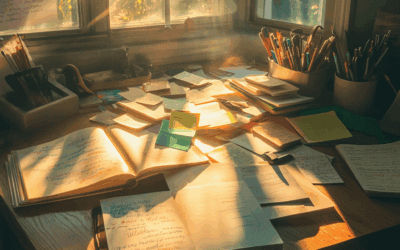Author’s Atlas Archive
Write Smarter, Not Harder: Unlock Your Best Writing Sessions
When I started to write this newsletter on Tuesday, I wanted to wait until the election results were announced.Should this edition of the newsletter be one of celebration or of comfort to my readers? I wondered.
Craft vs. Strategy: Finding Your Writing Flow
When I started to write this newsletter on Tuesday, I wanted to wait until the election results were announced.Should this edition of the newsletter be one of celebration or of comfort to my readers? I wondered.
A Writer’s Way Through an Avalanche
When I started to write this newsletter on Tuesday, I wanted to wait until the election results were announced.Should this edition of the newsletter be one of celebration or of comfort to my readers? I wondered.
Perfection Is Paralyzing—Forward Motion Fuels Creative Progress.
Have you ever found yourself hovering over the same paragraph, agonizing over every word, wondering if it’s perfect enough to move on?
Capturing Inspiration: A Strategy for Creative Organization
Last week during a Q&A on writing and publishing, someone asked the following question: “How do you organize all your notes and ideas for future projects?”
Find Your People: The Power of Writing Communities
A few months ago, I spent two weeks at the Autumn Women’s Coliving Camp, a collaboration between Digital Nomad Girls and Chateau Coliving, and the experience has been incredible for so many reasons.
Be Brave—It’s Time to Revisit the Manuscript You Love
Over the years, I’ve worked with many authors who’ve shared a similar story: a manuscript they once believed in was shelved after receiving feedback that made them question its worth
Give Your Creativity Room to Breathe
Sometimes, the key to creativity is simply stepping back.
Don’t Raise the Stakes—Sharpen Them
Stakes are the risks or consequences a character faces if they fail to achieve their goal. The stakes create tension and emotional investment, making readers care about the outcome.
Creating Your Own Writing Space
Today, I thought I’d share a peek into my own writing process and encourage you to embrace your unique way of creating.
“Overcoming” Fear – Lessons from a Writer’s Path
As you probably noticed, in this post’s title, I put “overcoming” in quotation marks. Why? Because I think this idea of overcoming fear is not actually that helpful.
Mastering Dialogue, Part 6—Use Subtext
As we conclude our series on dialogue, this article’s focus is on one of the most nuanced aspects of writing: using subtext.
Mastering Dialogue, Part 5—Keep It Concise
Today, we’re going to focus on the importance of keeping dialogue concise to maintain reader engagement and ensure a dynamic narrative pace.
Mastering Dialogue, Part 4—Show Character Through Speech
Today, we’re going to focus on a critical aspect of dialogue that can truly bring your characters to life: showcasing their unique traits through their speech.
Mastering Dialogue, Part 3—Keep Dialogue Realistic but Purposeful
Today, we’ll dive into the balance between realism and purpose in dialogue writing, which is crucial for creating engaging narratives.
Mastering Dialogue, Part 2—Skip the Pleasantries
Welcome back to our dialogue series! Today, we’re diving into our first guideline: skipping the pleasantries.
Subject: Mastering Dialogue, Part 1—The Guidelines
At the special request of an Author’s Atlas reader, this article series will focus on one of the most crucial aspects of writing: dialogue.
An Editor’s Guide to Self-Editing, Part 5—Style Enhancing
Today, we’ll dive into the final phase: style enhancing. This phase is about making your writing shine and ensuring your voice comes through clearly.
An Editor’s Guide to Self-Editing, Part 4—Scene Strengthening
Today, we’re diving into the second phase of our self-editing method: scene strengthening.
An Editor’s Guide to Self-Editing, Part 3—Story Structure
Today, we’re diving deeper into the first phase of revising your manuscript: story structure.
An Editor’s Guide to Self-Editing, Part 2: The System
Today, I’m going to give an overview of an effective self-editing method, which consists of three phases: structure, scene, and style.
An Editor’s Guide to Self-Editing, Part 1: Preparation
Self-editing is an integral part of refining and polishing your manuscript. Transform your draft into a polished piece of writing you’re ready to share.
How to Support Artisan Authors: Buying Direct
When you purchase books directly from an author, you’re doing more than just acquiring a new read and avoiding a potential scam; you’re directly supporting their craft.
Finding the Building Blocks of Your Story
Your unique story building blocks are your most reliable tools in crafting a narrative. They are the aspects of storytelling that feel most natural and compelling to you.
Unlock Your Writing Potential With Your Personal Motivation Strategy
Developing your personal writing motivation strategy can transform your approach to writing, making it a more fulfilling and productive experience.
Writing and Revising for Your Target Market
Identifying your primary target market is not just about demographic details. It’s about understanding their expectations, interests, and the themes that…
Navigating the Tides of Writing and Innovation
How do we navigate the tides of writing and innovation? Remember, missing a wave of innovation doesn’t spell doom; it’s a chance to prepare for the next.
Mastering Show, Don’t Tell: The Power of Visceral Storytelling in Writing
Discover essential techniques to bring your characters’ experiences to life and connect with your readers on a deeper level.
Should You Even Write A Book?
Should I even write a book? Is the book I’m writing good enough? Will anyone even read my book?




























